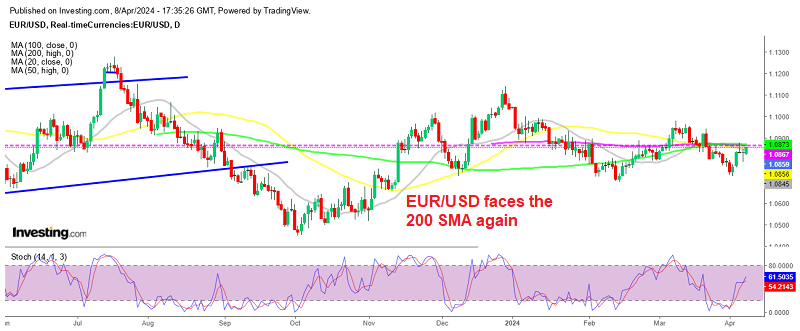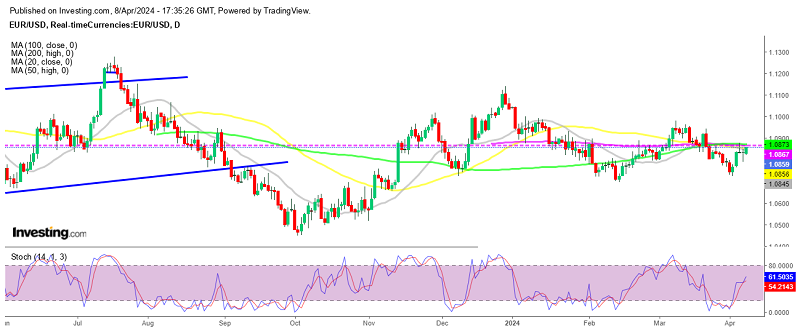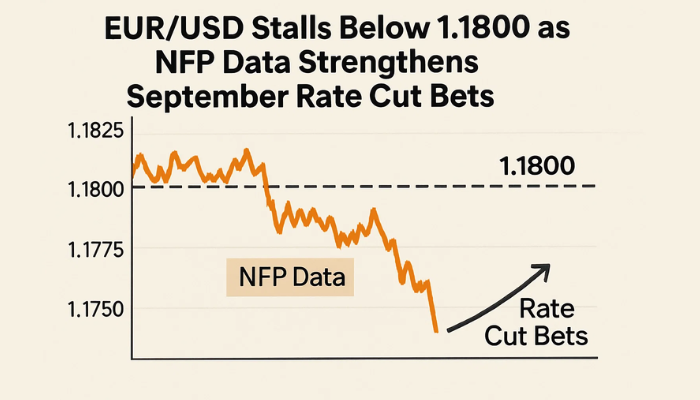EUR/USD Retests the 200 SMA After Better European Data
Today's outlook for EUR/EUR suggests a bullish sentiment, with a potential rise to 1.088 and 1.09 in the near term.

Today’s outlook for EUR/EUR suggests a bullish sentiment, with a potential rise to 1.088 and 1.09 in the near term. Our analysis factors in the better economic data from Europe today, with German industrial production jumping higher in March, while the Sentix Investor Confidence also improved.
EUR/USD Chart Daily – Buyers Pushing the Price Toward the 200 SMA
EUR/USD turned bearish in March as the USD moved higher, falling to 1.0720s. But last week we saw a reversal, despite the FED turning hawkish while the ECB (European Central Bank) has turned dovish and is preparing to cut interest rates, most likely in June.
At the upcoming European Central Bank (ECB) meeting, we anticipate a focus on the availability of significant data from the Eurozone by June. This data could potentially support the case for rate cuts, influencing the direction of the Euro against the US dollar. Additionally, we see the opposing market pressures affecting EUR/USD, which has been hovering around 1.08 for about two months.
We believe that the ECB meeting could provide clarity on the economic outlook, potentially leading to rate cuts and influencing the euro’s performance against the US dollar. So, in the long term, we see a skewed downside risk for EUR/USD, indicating a potential decline in the euro’s value relative to the US dollar. Given the slow growth estimates for the Euro area compared to the US, where economic performance exceeds consensus forecasts, EUR/USD should decline, but until the ECB meeting on Thursday, we should see some uptick higher in this forex pair, given today’s positive data from Germany.
German Industrial Production for March
- German industrial output month-on-month (mm) surged by 2.1%, significantly surpassing expectations of a 0.3% increase. This indicates a robust expansion in industrial production within Germany during the reported period.
- However, German exports experienced a decline, contracting by 2.0% instead of the expected decrease of 0.5%. This suggests a weakening in demand for German goods from international markets, which could be influenced by various factors such as global economic conditions, trade tensions, or supply chain disruptions.
- On the other hand, German imports increased by 3.2%, far exceeding expectations of a 1.0% decrease. This unexpected rise in imports may indicate growing domestic demand within Germany, potentially driven by factors such as increased consumer spending or investment activity.
EUR/USD Live Chart
- Check out our free forex signals
- Follow the top economic events on FX Leaders economic calendar
- Trade better, discover more Forex Trading Strategies
- Open a FREE Trading Account



